Have a happy holiday everyone!
Merry Christmas
original digital art
© Rachael Sinclair, 2011
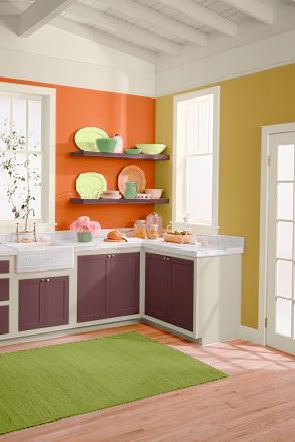 The soup has a base of tomatoes, a deep pinkish red. Add to that the translucent white of onions, the rich orange of carrots, and the wick green of celery. Great northern and dark red kidney beans round out the rustic rainbow with added spice of basil, thyme, and oregano. Use these colors in old fashioned design or anything dealing with cooking, food, or produce. In a room, the hues of pasta fagioli add lots of pop. They're bold and not for everyone, but can be a source of great interest in the right setting. The kitchen here features Behr French Pale Gold (350D-5), Startling Orange (S-G-230), Deep Garnet (110F-7), and Antique White interior flat enamel (1823).
The soup has a base of tomatoes, a deep pinkish red. Add to that the translucent white of onions, the rich orange of carrots, and the wick green of celery. Great northern and dark red kidney beans round out the rustic rainbow with added spice of basil, thyme, and oregano. Use these colors in old fashioned design or anything dealing with cooking, food, or produce. In a room, the hues of pasta fagioli add lots of pop. They're bold and not for everyone, but can be a source of great interest in the right setting. The kitchen here features Behr French Pale Gold (350D-5), Startling Orange (S-G-230), Deep Garnet (110F-7), and Antique White interior flat enamel (1823).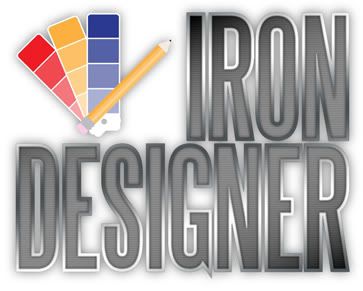 Imagine a client brings you a brand name, a niche market… and tea. The client wants branding, website design, and a few interior design ideas for an upscale, Japanese-themed cocktail bar named 'Katsu' (Japanese for 'thirst'). Your inspiration is a variety of loose-leaf tea sold by Teavana, the MatéVana®. Iron Designer, begin!
Imagine a client brings you a brand name, a niche market… and tea. The client wants branding, website design, and a few interior design ideas for an upscale, Japanese-themed cocktail bar named 'Katsu' (Japanese for 'thirst'). Your inspiration is a variety of loose-leaf tea sold by Teavana, the MatéVana®. Iron Designer, begin!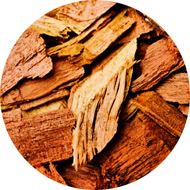 With summer comes the joy of grilling. If one is resourceful, an entire meal can be prepared out of doors. While some prefer gas and others charcoal, many add a touch of smoke to their meal by adding wood chips. The varied, tepid tones of mesquite chips can really spice up design as well.
With summer comes the joy of grilling. If one is resourceful, an entire meal can be prepared out of doors. While some prefer gas and others charcoal, many add a touch of smoke to their meal by adding wood chips. The varied, tepid tones of mesquite chips can really spice up design as well.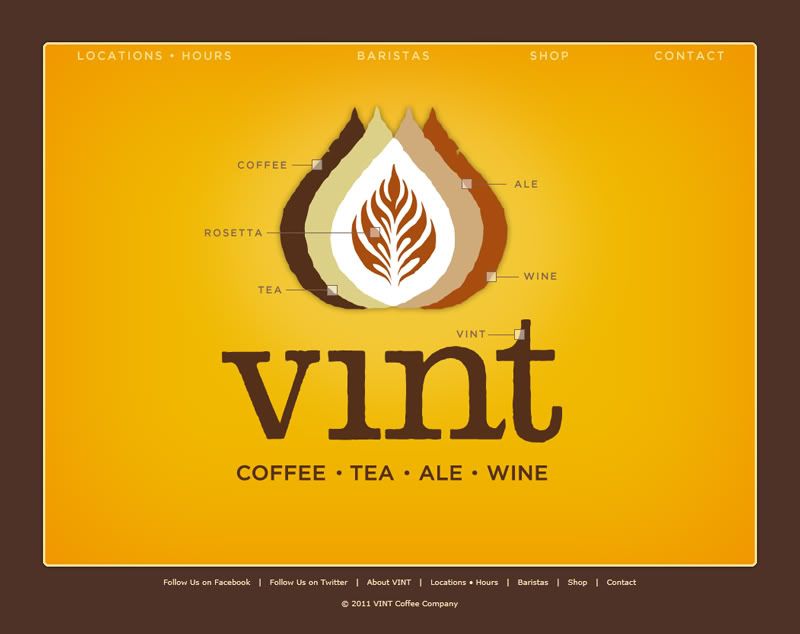 |
| This web page and all holdings are © Vint Coffee. |
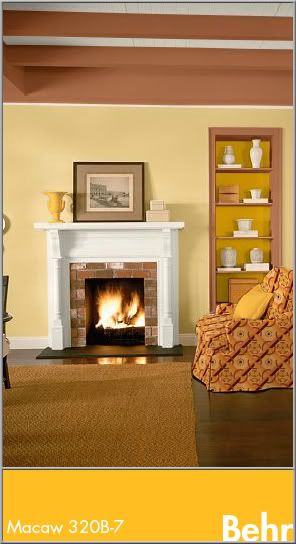 In interior design, the colors work best in rooms where you really want to add energy and warmth all at once. Kitchens, dining rooms, and living rooms benefit from the gold's soothing vigor and the tones naturally work well with wood floors and furnishings. These colors alone may seem bland to some, so feel free to spice up the mood with some graphic print on furniture, pillows, or art. Here, the yellow is used as an accent with Cinnamon Brandy (Behr 23OD-7), Honey Bear (Behr 34OD-4), and Oyster (Behr W-B-720).
In interior design, the colors work best in rooms where you really want to add energy and warmth all at once. Kitchens, dining rooms, and living rooms benefit from the gold's soothing vigor and the tones naturally work well with wood floors and furnishings. These colors alone may seem bland to some, so feel free to spice up the mood with some graphic print on furniture, pillows, or art. Here, the yellow is used as an accent with Cinnamon Brandy (Behr 23OD-7), Honey Bear (Behr 34OD-4), and Oyster (Behr W-B-720).
 | ||
| alternate version with Eliot quote |
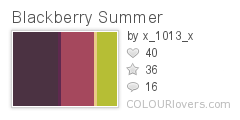
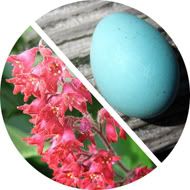 In this double dip of color, the melon-tinged pink of coral bells shares the stage with robin's egg blue. These two colors are a staple of late spring in some areas. Coral Bells (Heuchera) come in many varieties and are prized almost as much for their amazing foliage than they are for the bell-shaped blooms that perch on tall stems. They can thrive in full sun or shade depending on the variety and are a source of great visual interest in landscaping. Though the color of the flowers can vary, the most common flower color is a rich melon pink (PMS 709). This is a creamy color, tart and sweet all at once.
In this double dip of color, the melon-tinged pink of coral bells shares the stage with robin's egg blue. These two colors are a staple of late spring in some areas. Coral Bells (Heuchera) come in many varieties and are prized almost as much for their amazing foliage than they are for the bell-shaped blooms that perch on tall stems. They can thrive in full sun or shade depending on the variety and are a source of great visual interest in landscaping. Though the color of the flowers can vary, the most common flower color is a rich melon pink (PMS 709). This is a creamy color, tart and sweet all at once.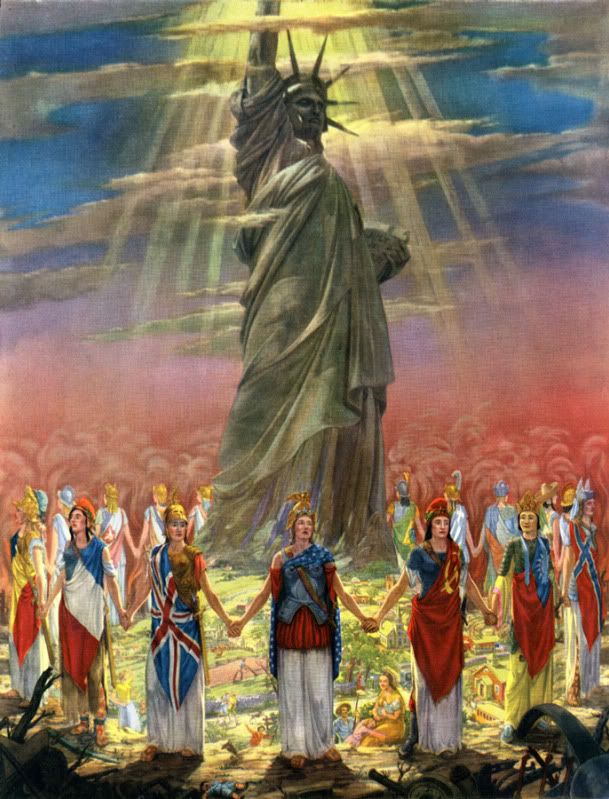 Thomas Maitland Cleland, the son of a Scottish doctor, was born on September 28th, 1880 in New York. When he was in his mid-teens, he convinced his parents to enrol him in the The Artist-Artisan Institute of New York. He saw this avenue as one that would bring easy success. After some time there, he had yet to find that particular thing to stoke his creative fire. One day, he observed a classmate designing a book ornament with pen and ink. He was in awe of the stark contrast and fine detail. This was the push he needed and soon his natural talent for detail and design blossomed. From here, he became a consummate and driven professional, running his own printing businesses at an early age. He took a break from his work (perhaps his only break from creative work) to serve in WWI.
Thomas Maitland Cleland, the son of a Scottish doctor, was born on September 28th, 1880 in New York. When he was in his mid-teens, he convinced his parents to enrol him in the The Artist-Artisan Institute of New York. He saw this avenue as one that would bring easy success. After some time there, he had yet to find that particular thing to stoke his creative fire. One day, he observed a classmate designing a book ornament with pen and ink. He was in awe of the stark contrast and fine detail. This was the push he needed and soon his natural talent for detail and design blossomed. From here, he became a consummate and driven professional, running his own printing businesses at an early age. He took a break from his work (perhaps his only break from creative work) to serve in WWI.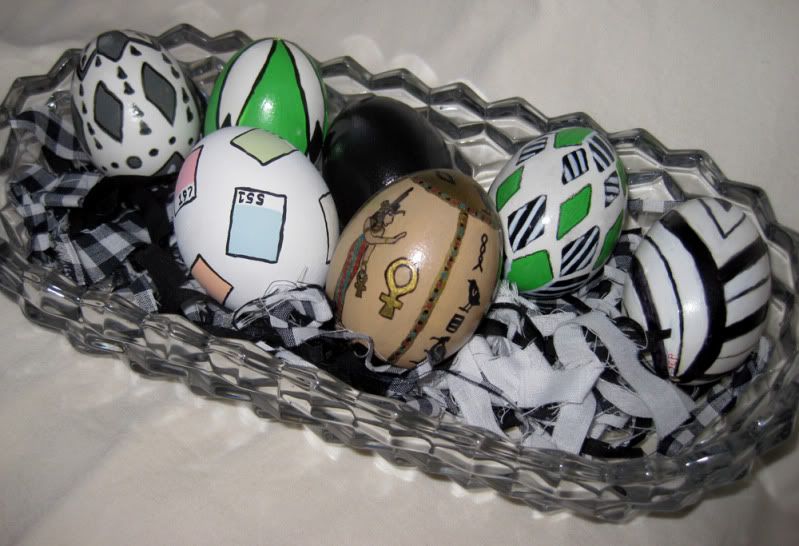 |
| The black, green, and white eggs along the back were done by my mother. I painted the ancient Egypt egg in my late teens and I did the Pantone chip egg this year. |
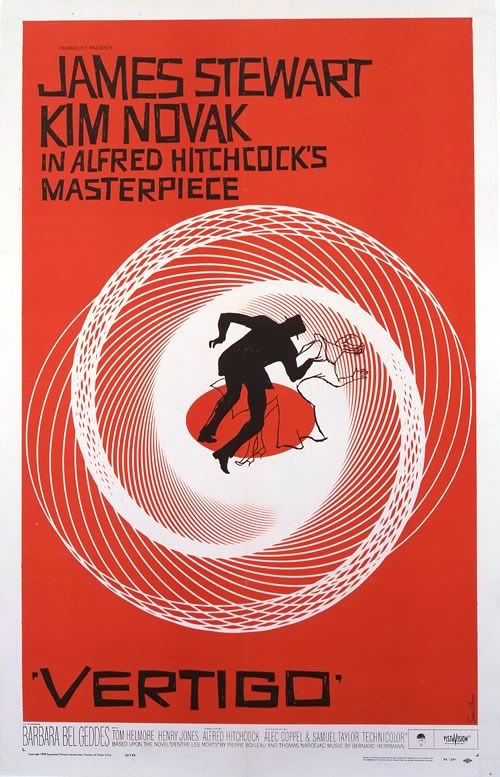 Though you may not have known at the time, you've likely seen the work of Saul Bass. Born in New York in 1920, Saul Bass was a key figure in graphic design. Some of his most notable work came in the form of poster and title design for films. Before Mr. Bass, most movie posters were paintings or head-shot photos of the film's famous stars. With his help, graphic design became an art form!
Though you may not have known at the time, you've likely seen the work of Saul Bass. Born in New York in 1920, Saul Bass was a key figure in graphic design. Some of his most notable work came in the form of poster and title design for films. Before Mr. Bass, most movie posters were paintings or head-shot photos of the film's famous stars. With his help, graphic design became an art form!